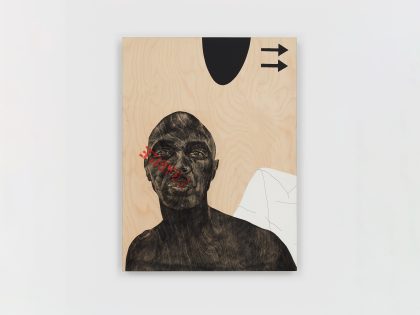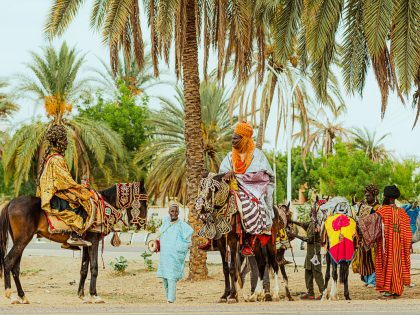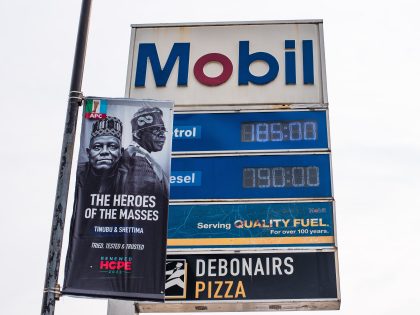The myth of Trump’s white working-class support
The role of the left should not be to focus its efforts on bargaining with the often misrepresented and caricatured concerns of a small sector of the working classes.

Donald Trump speaking with supporters at a campaign rally at the South Point Arena in Las Vegas, Nevada. Image via Gage Skidmore Flickr.
Whiteness is the biggest single factor that emerges from the US presidential election. The majority of white voters across gender and most income groups who went to the polls voted for Donald Trump, someone who does not hide his white supremacist views, condones sexual assault, and built his campaign on openly anti-immigration, anti-Latino and anti-Muslim themes.
Yet sectors of the Euro-American left adamantly stress the role of the white working classes in facilitating Trump’s victory, and dismiss race as “identity politics”, not completely explaining the Trump phenomenon.
Two leaders of the left, Bernie Sanders and Jeremy Corbyn, were quick to frame this election as a kind of “popular revolt” – very much like they did with Brexit a few months ago. For them, progressives should pay attention to Donald Trump’s anti-establishment narrative, so that we can offer alternatives without the “divisive rhetoric”. Sanders went as far as offering to collaborate with Trump on select issues that will help people come out of the crisis, as long as the president-elect does not engage in racism, sexism and xenophobia. Trump has just announced that he will immediately deport three million migrants, but that has not weakened the Vermont senator’s resolve. Influential commentators say that the anti-establishment left alternative to Trumpism should begin from white workers who supported Trump.
This story of an aggrieved “white working class” who joined Trump in huge numbers to rebel against neoliberal elites and neglectful Democrats is less an objective appraisal of working class voting trends, than a reflex of leftist common sense, inflected perhaps by a yearning for the heyday of (white) union solidarity in the Rust Belt.
Add to this the vicissitudes of the electoral college, and it is no wonder that some on the left focused on the behavior of about four hundred thousand voters in the Great Lakes region –Michigan, Wisconsin and Pennsylvania – and ignored the rest of the country. Closer analysis reveals that Republican support in the Midwest grew predominantly in rural areas, and in areas where whites are the overwhelming majority – these include both low and middle income areas. From our own data analysis in the three states above, Donald Trump’s growth compared to Mitt Romney’s performance in 2012 is significantly higher in counties with the biggest concentration of white residents than in the most racially mixed ones. This is not surprising, because negative attitudes toward immigration, non-white populations, gender, and LGBT issues are highest when whites live in racially homogeneous communities, and support for racism and anti-immigrant views are the strongest predictors for support for Trump.
Although the ballots are still being tallied, it looks like Hillary Clinton will be receiving the third highest number of votes in the political history of the United States. People of color voted for Clinton. Moreover, Clinton won the support of most voters earning under US $50,000 a year. Far from a popular rebellion against a neoliberal elite, then, a vast majority of voters who have endured structural economic and political disenfranchisement as well as the negative effects of the recent economic crisis, chose Clinton – the “establishment” candidate. Surely, they too have economic anxieties and grievances about the system, but did not vote for Donald Trump.
The gender dimension is also glossed over. The vitriolic sexist rhetoric Clinton has had to face is easily dismissed. Women have suffered from the recent financial crisis too, and like all disadvantaged groups, they bear the brunt of it more than better positioned groups. White women supported Trump by a smaller majority than white men, and women of color voted for Clinton more than men of color, but these trends are largely ignored. Not to mention, an estimated 30 to 40 million US residents are politically disenfranchised and could not vote.
These larger facts are important context for interpreting Trump’s decisive but marginal gains in a few key states. But commentators downplay them both to bolster a tidy narrative of working class rebellion, and to dismiss the importance of race and gender. This story veers dangerously close to the long-standing caricature of the “poor white,” which elites have used to avoid a reckoning with their own complicity with economic and racial inequalities. This dismissal disregards the suffering of groups who have experienced centuries of structural discrimination and marginalization, both in the US and abroad. It reinforces racial, ethnic and gender divisions, and thus undermines the possibility for broader solidarities.
What is also left out is that many whites – many of whom are not impoverished working classes – now feel under attack as “whites.” The election of Barack Obama, the first African- American president, contributed to a feeling that the world is becoming hostile to their very existence. Some believe that a conspiracy of minorities, leftists, feminists, and multi-billionaires, often Jewish, have allied to marginalize the “common white folk.” White racial anxiety is not a new problem in the history of American politics. Even perceptions of economic insecurity are filtered by racial anxieties, which makes race and economics impossible to separate. Racism is neither false consciousness nor mere bigotry, but an ideological and material structure that confers social privilege and material benefits onto a group, and mobilizes that group against any attempt to take away their benefits.
Disregarding the advances made by queer, feminist and critical race theories and social movements, many (mostly white) leftists do not recognize that racism and sexism are structures that regulate the distribution of economic, social, educational and other resources. Instead, they treat racism as rhetorical baggage left-over from the bad old days of colonialism and Jim Crow, allegedly used by elites to “mislead” the working classes. Workers who are white must be included into a wider coalition, but to think that a mere change in messaging will do the trick vastly underestimates the forces that the left is up against. Proposals cannot avoid tackling white and male privilege simply because “that’s our base”.
Nobody doubts that the establishment is in crisis, and something must change.
But why is this becoming common sense only now when it affects white Americans and Europeans? Why should a core of emboldened Trump supporters be the starting point for constructing a broad alliance against the devastating effects of a racial and gendered capitalist world order?
The role of the left should not be to focus its efforts on bargaining with the often misrepresented and caricatured concerns of a small sector of the working classes. It is to mobilize a broader intersectional alliance that can effectively tackle various forms of discrimination, and that addresses the differential levels of exclusion experienced by various groups.
Framing the Trump phenomenon as the wrong response to the right concerns goes in the opposite direction. Knowingly or not, it feeds the growing wave of white nationalism and xenophobia that is taking America and Europe by storm.



















